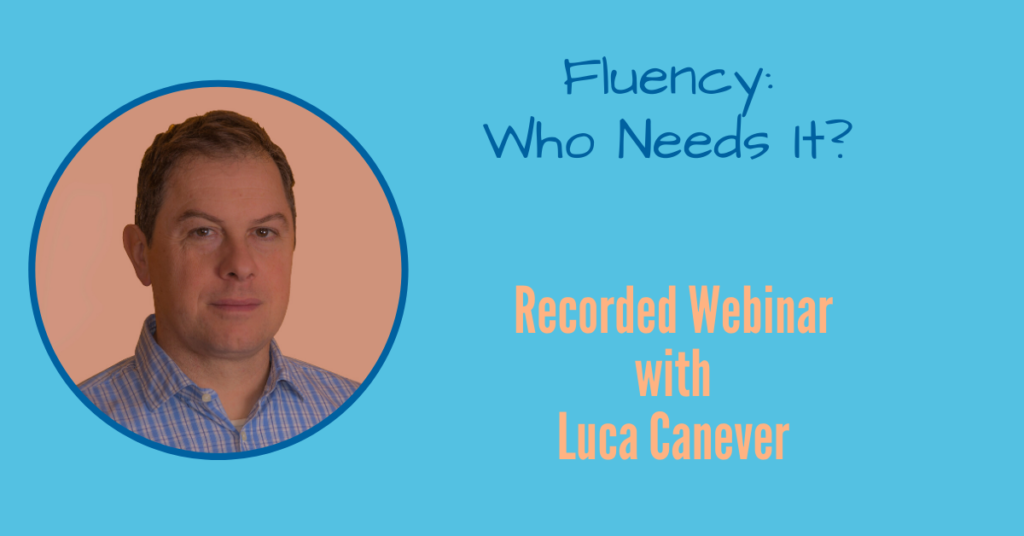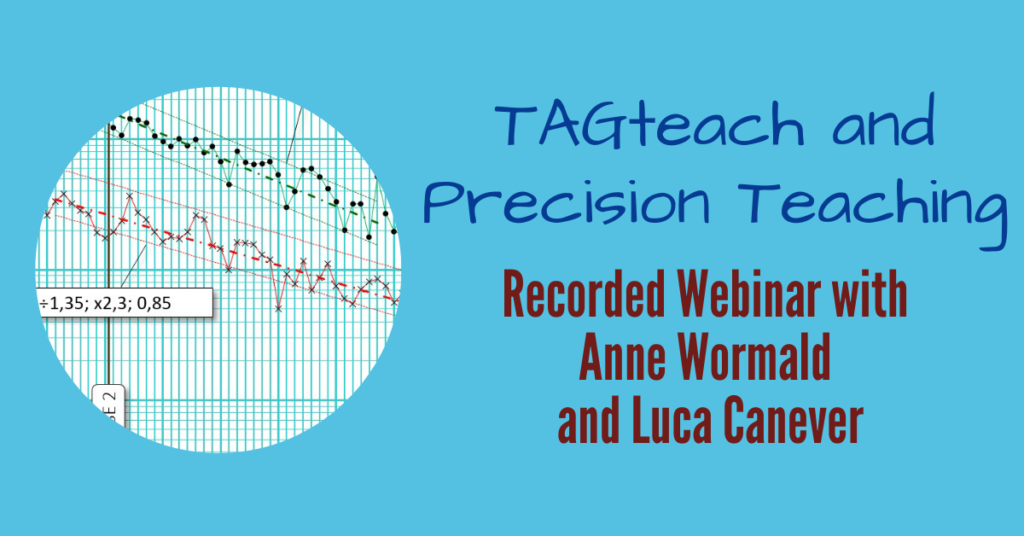By Luca Canever – TAGteach Faculty
What is Fluency?
Behavioral fluency is the competence of performing a behavior quickly and accurately. Do you know Olympics athletes? Or great artists? Or all the other people you admire in every field for their craftsmanship, because they do things that others can’t? We say that these are gifted and talented people. Truth is: Talent does not exist in nature and no one is born gifted. What these people have in common is their fluency in the things they do: the seemingly effortless execution of very difficult (for us) performances. Fluency is achieved only with years of intense practice: whether you want to win the gold medal at the next Olympics, or whether you want to become the next Leonardo. The only way to be successful is to practice with passion. (Scientifically put, “passion” is positive reinforcement).
We also meet fluency in mundane activities. If we often type on the keyboards of our PCs, we have a certain level of speed and accuracy in the sentences we type; we know how to walk fluently, or drive a car, or prepare dinner. Sure, some of us are better than others, but that’s just the result of more practice. The important thing is that “to be good” is not enough to be correct, but we must also be adequately fast. Every behavior or action needs an optimal execution speed to be effective, to serve its purpose.
Working in school I am rather interested in the optimal performance levels of school skills (especially reading, writing and math). Unfortunately, in our school systems everything is focused on the accuracy of performance but not on their rate of execution. To say that Marco got A+ in math because he completed his test doesn’t tell us much about Marco’s level of competence. If Marco needs two hours to do 10 additions and Giovanna needs 10 minutes, we can understand that the level of skills between the two students is profoundly different. Giovanna is much more likely than Marco to be successful when the teacher starts explaining multiplication.
Knowledge that fails to express itself at fluent levels is knowledge that does not support the study and development of higher-level skills. If I cannot read fluently, it is obvious that the study of Philosophy or English will become an insurmountable mountain for me. This could be one explanation for school quitting for example.
Optimal Execution Rates
I talked about optimal rate of execution. Here there are some examples that refer to the levels of an able-bodied adult
Reading: aloud 250 words per minute; silent 900 words per minute
Writing: cursive 90 letters per minute; write an essay 20 – 30 words per minute
Mathematics: write digits 100 – 150 per minute; written additions (max 20 as a result) 80 – 90 digits per minute.
If you are interested in fluent level of performance you can check this article: KUBINA (2002) – Fluency Aims
Where Does TAGteach Come In?
Well, you might ask, where is TAGteach in all of this? The answer is in the word “practice”. To learn a new skill requires a lot of practice. TAGteach is the perfect tool to start the process of learning a new skills highlighting fundamental pieces of performance called tag points. This will ensure all the positive reinforcement needed to master every skill.
Click here for more on tag points and how to create them.
To learn more check out our webinars on TAGteach and Fluency:


